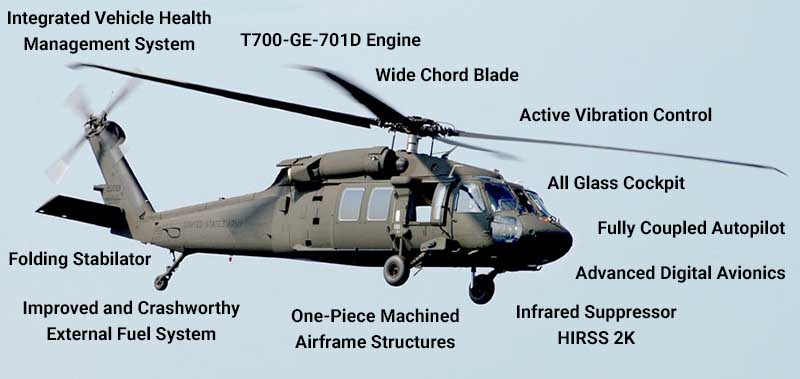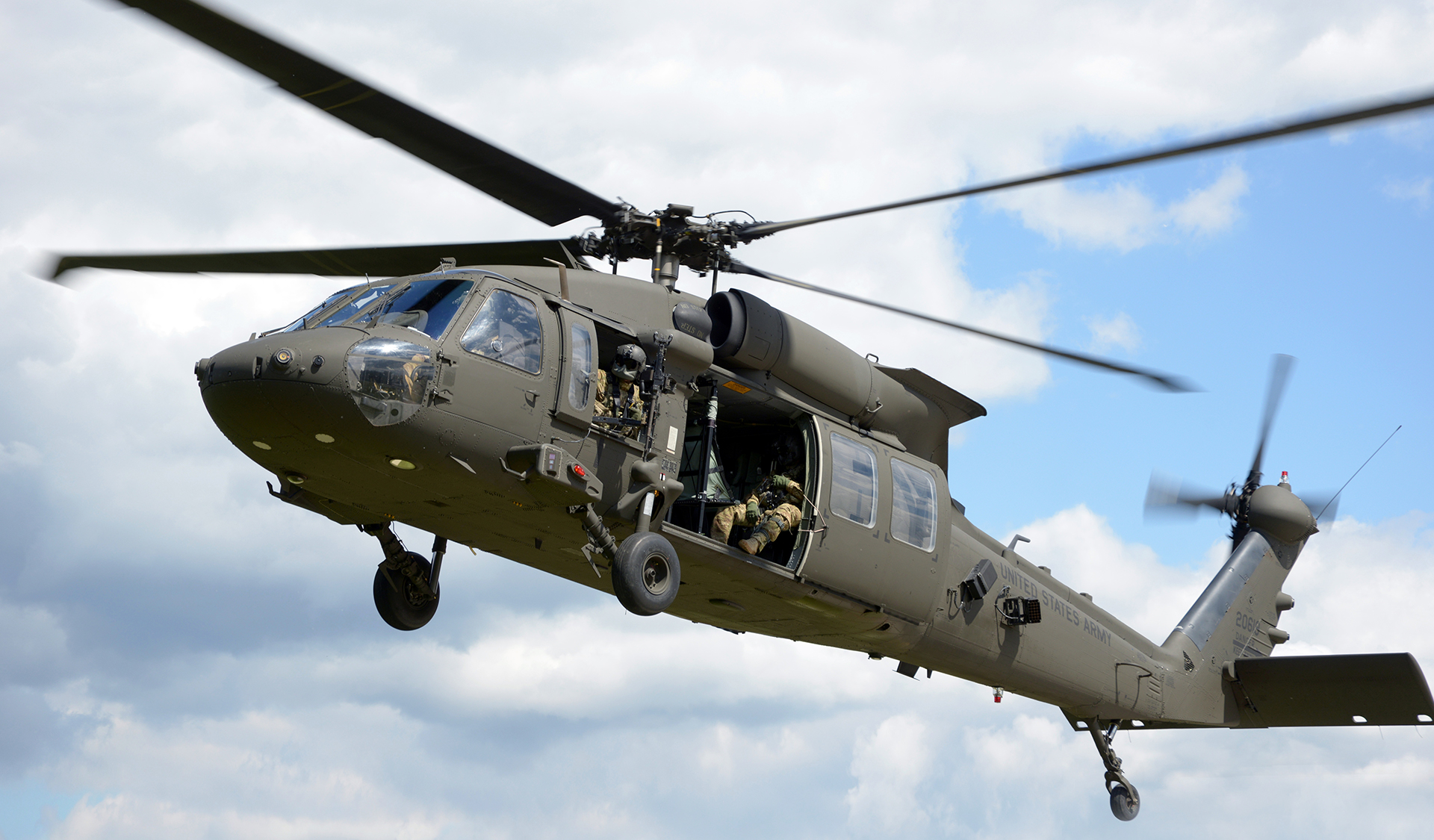Why the UH 60 Remains One of one of the most Trustworthy Helicopters in Service Today
Why the UH 60 Remains One of one of the most Trustworthy Helicopters in Service Today
Blog Article
Necessary Facts and Insights Regarding the UH-60 Helicopter
The UH-60 helicopter, a cornerstone of contemporary army aviation, has progressed significantly since its introduction in 1979. Understanding the complexities of the UH-60's duty exposes a complicated story of technology and adjustment that merits better expedition.
History of the UH-60
The UH-60 Black Hawk helicopter was established in the late 1970s as component of the United States Army's campaign to replace the older UH-1 Iroquois. The requirement for a more flexible, sturdy, and capable airplane developed from the lessons learned throughout the Vietnam War, where the constraints of the UH-1 ended up being evident. In 1972, the Army initiated a program to obtain a new utility helicopter, finishing in a competitive layout phase that saw a number of makers submit proposals.
Sikorsky Airplane was inevitably awarded the agreement in 1976, and the very first prototype of the Black Hawk took flight in 1974. Its layout focused on advanced modern technology, including a four-blade rotor system and a modular building and construction that allowed for quick area upkeep and flexibility to various goals. Formally getting in service in 1979, the UH-60 quickly became the foundation of Military air travel, offering in a wide range of duties such as army transport, medevac, and logistical assistance.
Over the years, the Black Hawk has actually gone through numerous upgrades and alterations, strengthening its standing as a vital asset in army procedures around the world (UH 60). Its durable efficiency proceeds to fulfill the advancing demands of contemporary warfare
Layout and Features
Incorporating advanced design principles, the UH-60 Black Hawk features a sleek, aerodynamic style that enhances its performance and effectiveness. This twin-engine utility helicopter is characterized by its distinct silhouette, with a high-mounted, four-blade major blades system that offers exceptional lift and stability. The rotor blades are created from composite products, adding to their resilience and reducing maintenance requirements.
The fuselage is created for optimal weight circulation and structural stability, permitting an optimum gross weight of around 22,000 pounds. The cabin layout helps with flexible arrangements, suiting different goals, from troop transportation to medevac procedures. Furthermore, the cabin is geared up with sophisticated avionics, consisting of digital displays and multi-functional systems that boost situational recognition.
The UH-60 also includes composite materials in its airframe, which reduce radar cross-section and enhance survivability in hostile atmospheres. Its retractable touchdown equipment improves the airplane's account, more adding to its wind resistant effectiveness. Overall, the thoughtful combination of layout components and materials not just boosts the Black Hawk's operational abilities yet also guarantees that it stays an important asset for missions across diverse terrains and problems.
Operational Capacities


The UH-60 is furnished with advanced avionics and navigation systems, facilitating operations in tough weather and low exposure scenarios. Its durable design enables it to execute in high-altitude and severe temperature level problems, better expanding its functional array. The helicopter's twin-engine arrangement supplies redundancy and enhanced performance, guaranteeing integrity throughout crucial missions.
Furnished with advanced interaction systems, the Black Hawk boosts situational recognition and control among army units. Furthermore, its capacity to carry out aerial reconnaissance and assistance close air support missions underscores its indispensable duty on the battlefield. Overall, the UH-60 Black Hawk's functional capacities are a testimony to its importance in modern military air travel, efficiently satisfying the needs of a swiftly evolving Find Out More functional landscape.

Variations and Adjustments
Various versions and modifications of the UH-60 Black Hawk have been established to satisfy certain mission demands and boost its operational versatility. One of the weblink most significant variation is the UH-60L, which presented updated engines, enhanced avionics, and improved cargo capability. In addition, the UH-60M alternative attributes progressed electronic avionics, a more powerful engine, and enhanced survivability systems, making it suitable for a bigger array of missions.
The HH-60G Lead Hawk is an additional specialized variant, developed for search and rescue operations. It is geared up with innovative navigation systems, external gas storage tanks, and medical emptying abilities. Likewise, the MH-60R Seahawk is enhanced for anti-submarine war and maritime procedures, boasting advanced radar and finder systems.
In addition, the armed variants, such as the AH-60, are customized for straight strike duties, featuring tool systems like rockets and gatling gun. The UH-60's versatility is additional showcased in its capability to be fitted with mission-specific equipment, consisting of cargo hooks for transport, army transportation insides, and reconnaissance sensors.
These versions and modifications underscore the Black Hawk's important role in modern military procedures, showcasing its capability to adapt to developing goal demands.
Function in Humanitarian Initiatives
The UH-60 Black Hawk has stepped up to play a critical function in altruistic initiatives around the world, demonstrating its convenience past army applications. This multi-mission helicopter is furnished to perform a selection of missions, including clinical discharges, calamity alleviation, and logistical assistance in tough settings.
During natural disasters, such as hurricanes and earthquakes, the Black Hawk has proven very useful for transferring alleviation products and employees to affected areas. Its capability to run in ascetic problems allows it to get to remote areas that might be inaccessible by ground transportation, guaranteeing prompt support to those in need.
In Addition, the UH-60 is commonly made use of for medical emptying goals, quickly delivering damaged people to medical centers. Its sophisticated medical capacities, including space for clinical workers and devices, allow life-saving treatments during critical circumstances.
In worldwide operations, the Black Hawk often works together with altruistic companies, showcasing its flexibility and reliability. By leveraging its abilities, the UH-60 not only supports military goals but likewise plays a crucial duty in alleviating and saving Full Article lives suffering during altruistic crises worldwide.
Conclusion
The UH-60 helicopter has actually established itself as a critical property in army procedures since its introduction, characterized by its durable layout and versatile abilities. The UH-60's contributions expand past fight, playing a considerable function in altruistic initiatives worldwide.
The UH-60 Black Hawk helicopter was created in the late 1970s as part of the United States Army's initiative to replace the older UH-1 Iroquois.Including innovative engineering concepts, the UH-60 Black Hawk features a sleek, wind resistant design that improves its performance and efficiency.Maximized layout and advanced design enable the UH-60 Black Hawk to stand out in a variety of functional functions. On the whole, the UH-60 Black Hawk's functional capacities are a testament to its relevance in modern military aviation, successfully fulfilling the needs of a rapidly progressing functional landscape.
Various variants and modifications of the UH-60 Black Hawk have actually been developed to meet specific mission demands and boost its functional flexibility.
Report this page